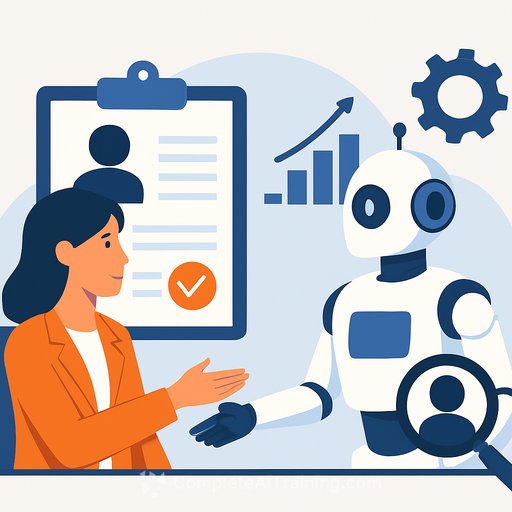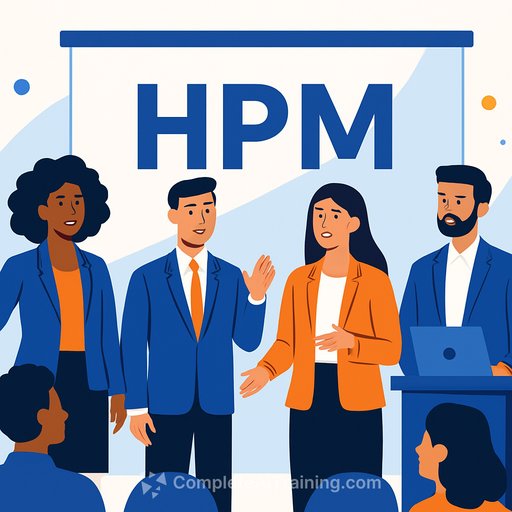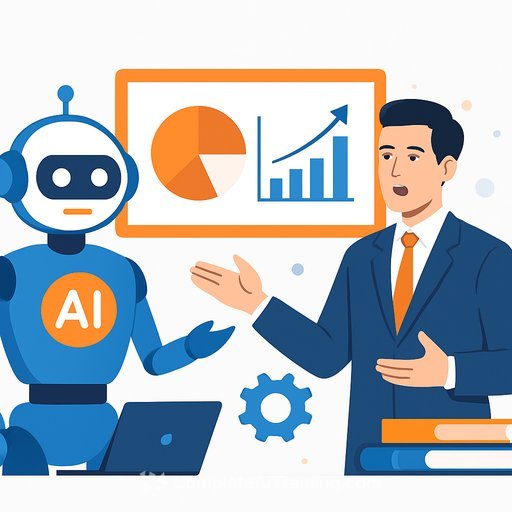AI in Hiring: From Insight to ROI
Three signals are hard to ignore right now: better hiring decisions have measurable ROI; many executives now see agentic AI as a co-worker; and a growing chunk of hiring managers use AI to screen applicants-while some can't explain what the AI actually values.
If you work in HR, this is both opportunity and responsibility. Here's a clear plan to turn those headlines into results you can defend.
The business case: quantify the ROI of better hiring
Better hiring pays for itself fast. The key is to put numbers behind it and report them consistently.
- Quality of hire uplift: Tie first-year performance and manager satisfaction to source, assessment, and interview structure. Track uplift after changing your process or tools.
- Time-to-productivity: Measure days to first milestone. Improvements here are direct value creation.
- Early attrition reduction: Each mis-hire can cost 30% of annual salary (or more in specialized roles). Fewer mis-hires = immediate savings.
- Manager time saved: Minutes per candidate review × number of candidates × manager hourly rate. Report monthly.
- Offer acceptance: Better match and faster cycle times push acceptance up. Quantify the lift post-change.
Simple formula to share with finance: ROI = (Savings + Value Created - Total Cost) / Total Cost. Use conservative assumptions and trend it monthly.
Agentic AI as a co-worker: what changes in HR
Many leaders now treat AI as a collaborator, not a gadget. In recruiting, think "AI handles repeatable tasks; people make judgment calls."
- Where AI helps: draft job descriptions, screen for minimum requirements, schedule interviews, summarize feedback, flag inconsistencies, and prep structured interview questions.
- Guardrails: define what AI can do without approval, and where human sign-off is mandatory (e.g., rejections, final scores, offers).
- Data boundaries: keep AI away from protected attributes and free-text that might leak them. Use templates and structured fields.
- Team enablement: share prompt libraries, decision checklists, and examples of "good vs. bad" AI output. Hold weekly reviews to refine.
- KPIs: time-to-slate, candidate satisfaction, interview consistency, and adverse impact. If these don't improve, adjust or stop.
AI screening: transparency, bias, and control
One finding stood out: some hiring managers use AI to screen applicants yet can't explain the criteria. That's a risk. You need transparency, auditability, and clear oversight.
- Ask vendors: What features does the model consider? How are weights set? How often is fairness tested? Do you provide audit logs? Can we adjust thresholds and criteria?
- Run adverse impact testing: Track selection rates by demographic and stage. Investigate gaps. Document fixes.
- Communicate with candidates: Notify when AI is used, provide a human review option, and explain how to request an accommodation.
- Keep a human in the loop: No automated rejections without human verification for borderline cases.
- Revalidate regularly: Quarterly audits, new job family checks, and drift monitoring after model updates.
A 30-60-90 day plan to make this real
- Days 0-30: Pick two roles. Map the funnel, define structured criteria, create interview rubrics, and pilot AI for drafting JDs and summarizing feedback. Baseline your metrics.
- Days 31-60: Add AI screening on clearly defined minimum requirements with human review. Start adverse impact testing. Publish an internal AI-use policy and RACI.
- Days 61-90: Expand to more roles. Automate scheduling, standardize prompts, and embed weekly QA. Present ROI to leadership with metric deltas and risk mitigations.
Metrics to track weekly
- Time-to-slate and time-to-offer
- Qualified candidate rate and on-target first-round rate
- Offer acceptance rate and first-90-day attrition
- Selection rates by demographic at each stage
- False negatives/positives from random human re-reviews of AI-screened candidates
- Candidate and hiring manager satisfaction
Policy and compliance essentials
- NIST AI Risk Management Framework for structured risk controls.
- EEOC guidance on AI in selection procedures for fairness and documentation.
Practical prompts and checklists your team can use
- Job description prompt: "Draft a JD for [role] focused on outcomes, must-have skills, and objective requirements. Exclude years-of-experience filters unless essential. Return a structured list of competencies."
- Screening checklist: Minimum requirements, disqualifiers, evidence in resume/portfolio, reasons to advance, and flags for human review.
- Interview pack prompt: "Create five behavior-based questions tied to [competency], include a 1-5 rubric, and sample strong/weak indicators."
Skills HR teams should build next
- Structured interviewing and rubric design
- Basic data literacy for funnel analytics and adverse impact testing
- Vendor risk evaluation for AI tools
- Prompt craft for repeatable, auditable outputs
Where to upskill
If you're formalizing AI use in hiring, focused training shortens the learning curve and reduces risk.
- AI courses by job function for recruiters and TA leaders.
- Prompt engineering for creating reliable, reviewable outputs.
Bottom line
Treat AI as a co-worker for repeatable tasks, keep humans accountable for judgment, and measure everything. You'll see faster cycles, higher hiring quality, and fewer compliance surprises.
Make the ROI visible. Make the process fair. And make your team the one that sets the standard.
Your membership also unlocks:






